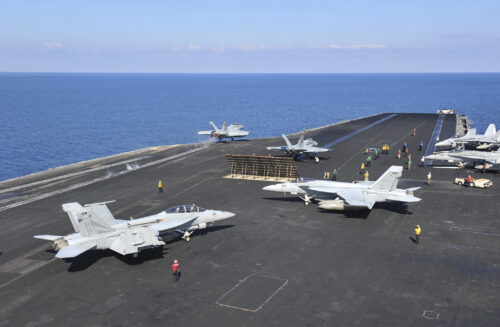The U.S. Congressional Budget Office has recently released a report comparing the availability and use of the U.S. Navy’s F/A-18E/F Super Hornet fighter with their predecessor, the F/A-18C/D Hornets, as well as other aircraft operated by the Navy and the Air Force. The report measures availability as the percentage of time an aircraft can be flown on training or operational missions and use as the number of hours flown on those missions, expressed as average monthly flying hours per aircraft.

The report found that both types of Hornets experienced sharper and steeper drops in availability compared to the rest of the Navy’s fleet. The Super Hornet, being a newer aircraft, has a higher availability rate, on average, than the older F/A-18C/Ds. However, when compared to F/A-18C/Ds of the same age, the Super Hornet fleet has lower availability rates. For example, Super Hornet availability at age 10 was 18 percentage points lower than F/A-18C/D availability at the same age, comparable to F/A-18C/D availability at age 20. These findings suggest that age has had a more adverse effect on the Super Hornets than their predecessors.
The report also found that flying hours cannot explain the difference in availability between the two types of aircraft. The monthly flying hours of Super Hornets only slightly exceeded those of F/A-18C/Ds in the early years of operation, but by age 10, Super Hornets were flying four fewer hours per month than their predecessors.
The report concludes that the availability rates of Super Hornets may continue to decline as the fleet ages, as has been observed for many fighter and attack aircraft. However, some fleets have had stable availability rates for extended periods, and the Navy could take steps to increase or stabilize the availability rate of the Super Hornet by increasing maintenance funding. This report provides valuable insights into the current state of the Department of the Navy’s aircraft fleet and highlights areas for improvement and investment.
For more information, hit the Source below
Tom Cruise will buy more Super Hornets for the Navy if asked nicely!
Best to keep Super Hornets line running alongside the F-35.